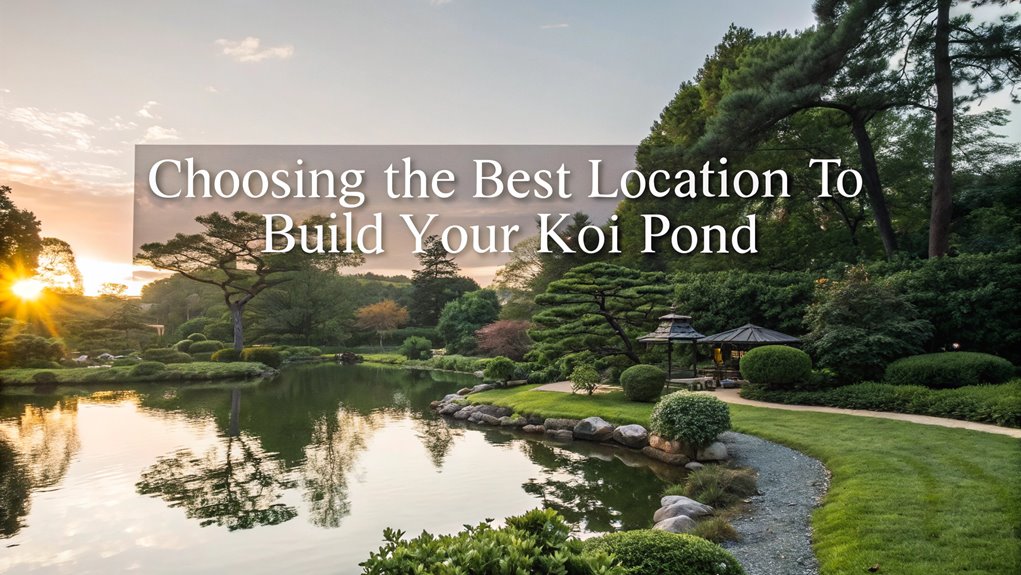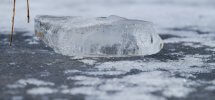When selecting a location for your koi pond, aim for partial sunlight to prevent overheating and algae growth. Place your pond at least 10-25 feet from trees to minimize leaf debris. Prioritize firm, well-draining soil to maintain pond stability and prevent waterlogging. Ensure natural water flow and drainage prevent contamination, and follow local regulations for pond depth and permits. With these considerations, you’ll create an ideal spot for your pond’s long-term success. Continue for more expert insights.
Key Facts Summarized
- Ensure the location receives at least six hours of partial sunlight daily to maintain a healthy aquatic environment.
- Position the pond 10-25 feet away from trees to minimize maintenance and water quality issues from falling leaves.
- Evaluate soil stability and drainage to prevent shifting, sinking, or waterlogging of the pond structure.
- Verify local building codes and zoning ordinances for compliance with pond depth and permit requirements.
- Consider natural drainage patterns to avoid rainwater runoff contamination and ensure stable water levels.
Sunlight and Shade Considerations
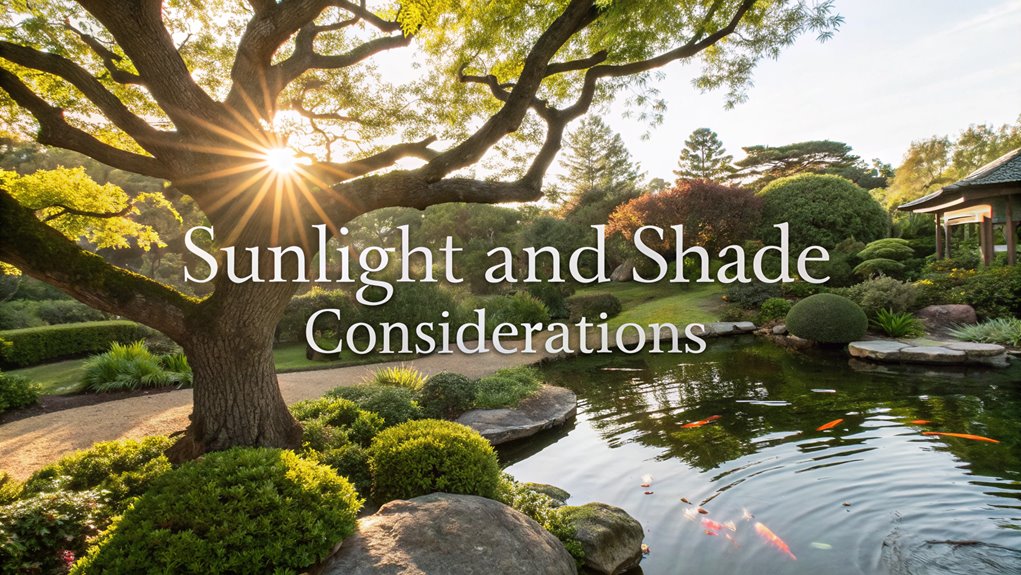
When planning the location for your koi pond, carefully consider the balance of sunlight and shade to optimize the pond’s ecosystem. Aim for a site that offers at least six hours of sunlight daily, which encourages a healthy aquatic environment.
However, too much direct sunlight can increase water temperatures, stressing your koi and promoting harmful algae growth. To maintain ideal conditions, select a location with partial sunlight. This ensures your pond receives sufficient sun exposure while minimizing prolonged heat risks.
Incorporate shade structures like pergolas to help control water temperatures and reduce evaporation. By strategically balancing sunlight and shade, you’ll enhance koi health and improve water quality, decreasing the reliance on chemical treatments to manage unwanted algae. Additionally, maintaining a balanced ecosystem is crucial for the long-term sustainability of your koi pond.
Avoiding Tree Proximity
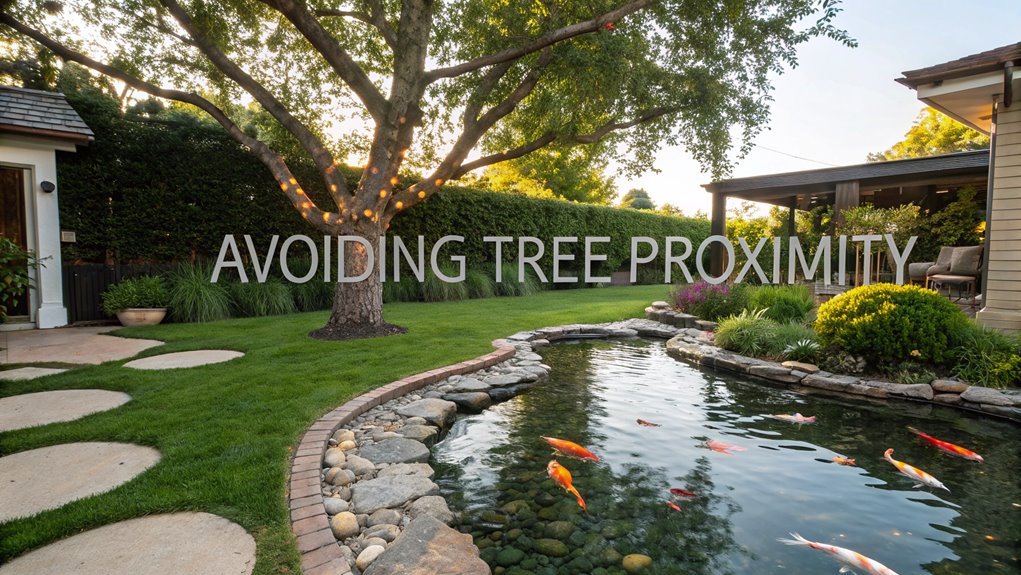
Balancing sunlight and shade is just one aspect of site selection; it’s equally important to consider tree proximity when planning your koi pond. Trees can significantly increase maintenance due to falling leaves, which degrade water quality and promote algae. Storm damage from branches may also disrupt the pond ecosystem. To minimize these risks, place your koi pond at least 10-25 feet away from trees. Pine trees, with their needle-like leaves, can clog filters, presenting unique challenges. Evaluate nearby tree species, as some, like redwoods, might pose fewer issues. Maintaining pond conditions is essential for the health of your Koi. Here’s a helpful table:
| Tree Type | Maintenance Impact | Recommended Distance (feet) |
|---|---|---|
| Pine | High | 25 |
| Maple | Moderate | 15 |
| Redwood | Low | 10 |
| Oak | Moderate | 20 |
| Birch | Moderate | 15 |
Assessing Ground Stability
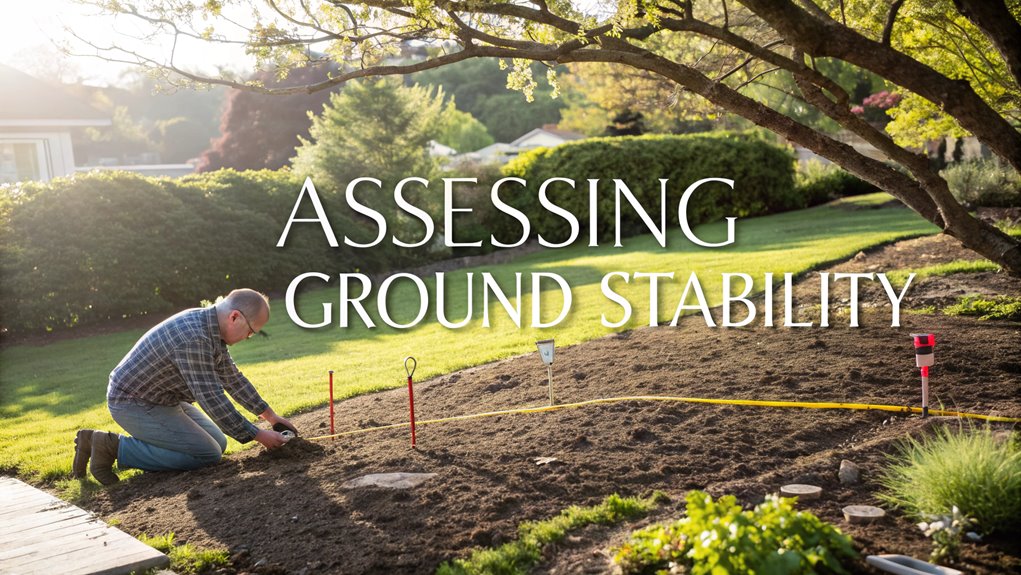
Ensuring ground stability is crucial for the successful installation of your koi pond.
You’ll need to assess several factors to maintain the pond’s integrity and longevity. Here’s a step-by-step approach:
- Evaluate Soil Composition: Determine the type of soil at your site. Clay retains too much water, risking water pooling, while sandy soils may drain excessively.
- Test Ground Stability: Check for firm, level ground to prevent shifting or sinking of the pond.
- Inspect for Water Pooling: Avoid areas with excessive moisture or evidence of pooling, as they can destabilize the pond structure.
- Conduct a Soil Test: Analyze soil pH and nutrient levels, which affect not only ground stability but also the health of your pond’s ecosystem.
Evaluating Drainage and Water Flow
While positioning your koi pond, it’s essential to carefully evaluate drainage and water flow to maintain a healthy ecosystem.
Start by selecting a location on level ground to prevent water pooling, which can create stagnant areas harmful to koi. Assess the natural drainage patterns of your yard; avoid areas prone to collecting water, as excess runoff can lead to contamination.
Ensure that during heavy rains, water doesn’t flow directly into the pond, introducing pollutants. To enhance pond maintenance, consider a drainage system or settling chamber to manage excess water and biological waste.
Monitor the soil composition; well-draining soil is crucial for maintaining stable water levels and preventing your pond from becoming waterlogged, ensuring a thriving environment for your koi. Additionally, consult local utility services to identify any underground pipes or cables before excavation, ensuring a safe and effective placement for your pond.
Accessibility for Maintenance
After assessing drainage and water flow, focus on the accessibility of your koi pond for maintenance. Proper planning ensures your pond layout supports easy upkeep, maintaining optimal water quality. Here’s how:
- Distance: Position the pond 10-25 feet from your home. This proximity eases regular tasks like cleaning and water testing.
- Pathways: Design wide pathways or stepping stones around the pond. They allow safe, convenient movement during maintenance.
- Seating Areas: Incorporate benches nearby. These create comfortable spots for monitoring and routine checks.
- Equipment Access: Keep maintenance tools like nets and water testing kits readily accessible. This streamlines upkeep efforts.
Plan for future modifications by leaving space around the pond, facilitating potential expansions or equipment additions. Additionally, consider creating daily water quality checks to ensure that your pond remains healthy and your koi thrive.
Compliance With Local Regulations
Building a koi pond involves more than just creative design; it’s essential to understand and adhere to local regulations to avoid complications.
Start by checking local building codes to determine compliance regarding pond depth, which often requires a minimum of 2 feet for safety. In some areas, ponds deeper than 2 feet might need fencing, especially where children or pets are present.
Verify if a permit is necessary by consulting local zoning ordinances, as regulations vary by region. Don’t overlook homeowners associations (HOAs) that might impose specific guidelines or restrictions.
Also, ensure compliance with environmental regulations, particularly if your site is near wetlands, streams, or protected habitats. Proper diligence can prevent legal issues and ensure your project runs smoothly.
Planning for Pond Size and Shape
When planning your koi pond, determining the appropriate size and shape is crucial for both the aesthetics and functionality of your outdoor space.
To create an ideal environment for your koi fish, follow these guidelines:
- Calculate Pond Size: Use the formula `(length x width x depth x 7.5)` to determine the gallon capacity, ensuring ample space for koi growth.
- Select Pond Depth: Aim for a depth of 3-4 feet to regulate water temperature and provide a safe habitat.
- Choose a Shape: Consider shapes like ovals or rectangles that fit your yard’s layout and enhance the water feature’s design.
- Assess Accessibility: Ensure the pond’s location allows easy maintenance access and visibility for monitoring conditions.
Additionally, it’s important to remember that proper filtration systems are necessary to maintain a healthy environment for your koi.
Enhancing Aesthetic Integration
While designing your koi pond, integrating it aesthetically into your landscape is crucial for creating a cohesive outdoor environment.
Choose a pond shape, like oval or rectangular, that complements your garden layout, ensuring visual harmony. Position the pond in a location visible from key living spaces, such as a back deck or kitchen window, to establish a focal point.
Utilize natural materials like rocks and gravel around the pond’s edge for a seamless transition with your landscape. Strategically place aquatic plants to provide shelter for koi and add seasonal color and texture, enhancing the pond’s aesthetic integration.
Finally, integrate lighting features to highlight the pond’s beauty during evening hours, creating a tranquil ambiance and extending enjoyment into the night.
Frequently Asked Questions
How to Determine Where to Build a Pond?
Consider sunlight, distance from structures, and tree placement. Assess ground stability and levelness. Review local codes for depth and fencing. Balancing these factors ensures a suitable, sustainable pond site, enhancing both design and environmental harmony.
Where Not to Put a Pond?
When deciding where not to put a pond, steer clear of placing it under trees or near your house. Avoid areas with unstable ground or excessive sun. Ensure good drainage to prevent mosquito breeding and maintain optimal water quality.
Should a Koi Pond Be in Sun or Shade?
You should position your koi pond to receive partial sunlight for about six hours daily. Incorporate natural or artificial shade to manage temperature, reduce evaporation, and balance oxygen levels, ensuring a healthy environment for koi and plants.
Where Is the Best Place to Build a Pond?
70% of ponds thrive with balanced sunlight and shade. Locate yours 10-25 feet from your house on level ground. Ensure it’s away from trees, near power sources, and easily accessible for maintenance to optimize design and functionality.
Conclusion
In choosing the perfect spot for your koi pond, you’re like an artist selecting a canvas. Ensure it dances with sunlight yet rests in gentle shade, steering clear of intrusive trees. Check the soil’s embrace for stability and let water flow effortlessly, avoiding pooling woes. Keep maintenance within arm’s reach, adhere to local rules, and sculpt the pond to fit its surroundings gracefully. Your pond will be the masterpiece that seamlessly melds nature with design.
